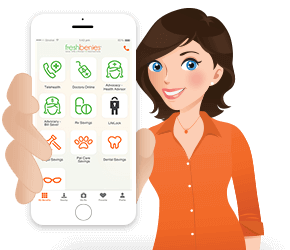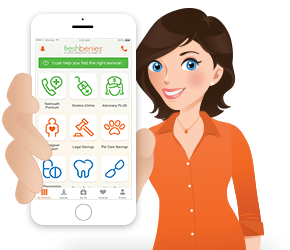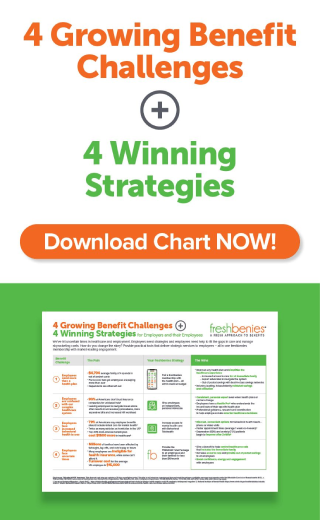5 STEPS: CHANGE YOUR THINKING & CHANGE YOUR LIFE
Did you know you have 60,000 – 90,000 thoughts per day (well, if you’re an “average person”)? Did you also know that 96% of those thoughts are the same as the day before? For all the thinking we do, only 4% per day are new thoughts. Yikes!
I had a great chat with Elizabeth Mahusay who shared with me what she teaches women all over the U.S. One of her main (and favorite) topics is how humans think and she teaches on how to make a real shift in our thought life. She started her career as a chemistry teacher, but left teaching to build her own business. She has been researching and developing Biblical studies and educating women’s groups for over a decade.
Elizabeth makes a great point when she says, “If you thought negatively yesterday, you will think negatively today, too. This is also true if you think positively. There are many authors shouting about the 'power of positive thinking', but HOW to achieve that in a real-life way on a daily basis is the hard part for most of us. In other words, I can’t just make myself ‘be more positive’ – instead, we need to set about a process to make it a habit in our daily lives.”
She outlines the following 5 steps to help us change our thinking…
1. Decide to change
I should have started this entire article with this sentence: “WARNING: if you don’t WANT to change your thinking, don’t waste your time reading this article!” We’ve all heard the stories of people who’ve lost 50 pounds – when someone asks them how they did it, many say “I finally made the decision to just do it.” (HHHMMM...maybe those Nike people have a point?!)
Elizabeth explains how the mind works and why it’s important to actively make a decision to change (we’ll stick with the weight loss example): “The definition of insanity is ‘doing the same thing over and over,’ right?
**So, you keep thinking the same thing you’ve been thinking (I’m inactive and heavy)
**Then, your mind starts believing what you’re thinking (I’m inactive and heavy)
**As a result, you start acting on those beliefs (I’ll eat unhealthy foods and not exercise)
**Finally, the results show up in real life (weight gain, declining health)"
At this point, you can’t just say, “OK, that’s IT! I’m going to eat better and get active.” You MUST track back to the thoughts that ultimately led to this outcome and then CHANGE your thoughts. There’s “being positive” and then there’s addressing the thoughts that have put you in the negative place. The key step is making a conscious decision to change your thinking.
I hear you saying, “yes, but how?” I’m so glad you asked….
Before you move forward, list 2-3 thoughts you want to improve (body image, parenting, fear, finances, marriage). Write it down…what is it for you? As you read ahead, apply the ideas in each step to your thought of choice.
2. Pay attention
First, a little science from the ex-science teacher: we have a conscious mind and an unconscious mind. The conscious mind is where we do the thinking we’re aware of – decision-making, complicated tasks, thinking through a specific solution to a problem. The unconscious mind is the part of our brain that controls our involuntary activities (breathing, digesting, etc.) and it’s processing thousands of thoughts per day that we’re not really even aware of. Remember when you first started driving and you had to think about every action – that was your conscious mind. Now, I can drive 10 miles to work and barely remember if I ran a red light – that’s the unconscious mind doing its job.
If we constantly dwell on negative thoughts in our conscious mind, it turns into a belief stored in our unconscious mind. For instance, if I continue to consciously think, “I’m overweight and unhealthy” my unconscious mind will begin to believe it as truth. This then drives my food and exercise decisions. The good news: we have the ability to “screen” our thoughts, to stop a thought before it moves to the unconscious mind. Remember the Shape-O-Sorter Ball toy (pic below) – there were shaped pieces on the outside of the ball and you would match the shapes to the holes in the ball and shove ‘em through with your chubby little toddler fingers?
Think of each of your thoughts as a shape you need to process and put through the right slot. Ask yourself:
**Is this thought positive or negative?
**Is this thought life-building or life-busting?
**Is this thought relationship building or relationship-busting?
Here’s a great example: I’m walking into the laundry room and I think, “My husband doesn’t do anything around this house”. There’s the thought and now’s my chance! I can agree with it, get frustrated, let it fester, expand (“that’s why I don’t have time to do what I want to do”, “that’s why our house is always such a mess”, etc.) and let it move to my unconscious mind. OR I can ask myself these questions and conclude, “That thought is not true – my husband does many things around the house. He helps with X, Y, Z, etc.”
We aren’t good at this task because we have so many distractions in our life and there is always something vying for our conscious mind (kids, radio, TV, computer, phone, etc.). Frankly, most of us never take time to just be quiet or to stop the thought and analyze it. We can’t do the job of sorting our thoughts unless we’re paying attention, considering and addressing them.
Elizabeth gives some great advice about how to fit in time to think: “I get ready in the morning in complete silence - no TV, no radio, no audio books, no kids/husband. This helps me to set my mind for the day and I’m reminded of things that I need to do. A portion of my drive time is also reserved for silence and thinking time. It’s amazing how much thinking you can do in complete silence for a few minutes a day.”

3. Filter your thoughts
Whether you hold the Bible as a moral authority or not, most of us can agree that the principle teachings make sense. There’s no real scientific “standard” for measuring our thoughts, but the Bible gives a very specific set of filters for us to use in Philippians 4:8:
Finally, brothers and sisters, whatever is true, whatever is noble, whatever is right, whatever is pure, whatever is lovely, whatever is admirable—if anything is excellent or praiseworthy—think about such things.
Elizabeth says, “In science, we filter substances all the time. The good stuff goes through and the bad stuff is trapped. Philippians 4:8 tells us how to filter our thoughts through the truth of God’s word. We have choices to make in our thinking - God gave us the ability to be in control of our thought life, but He also gave us a very specific roadmap to help.”
Here’s another great example from Elizabeth: “I was supposed to meet up with a woman at her house. I waited and waited until I finally realized that she stood me up. Now, I can choose the easy way and dwell on ‘Who does she think she is standing me up?’ OR I can put that through my filters: ‘Is that thought fair to her? Is it praiseworthy? Is it lovely? NO!”
4. Reject and Replace
Now, it’s time to reject what’s wrong and replace it with what’s true. You’ve put your thought through the Philippians 4:8 filters - if it doesn’t line up, you have to reject it.
So, I reject the thought that my husband never does anything around the house, because a) it’s not true and b) God made him, so he’s automatically respectable because he’s made in God’s image. We may have our differences about HOW and WHEN things should be done around the house, but I can reject the “My husband never does anything around the house” thought.
Remember the woman that missed Elizabeth’s meeting? Turns out she left town unexpectedly because a very close friend had emergency surgery. Elizabeth says, “It was a good thing I rejected the negative thought process I wanted to hangout on. Obviously, her friend was a greater priority than our meeting. My first thought was not true or fair.”
When we don’t quickly dismiss a thought, we can get to the underlying issue. The thought might just be a symptom of other poor thought processes we’ve never addressed. The issue, in most cases, isn’t the REAL issue.

5. Repeat with positive phrasing, passion and persistence
This isn’t Stuart Smalley from Saturday Night Live saying “I’m good enough, I’m smart enough and doggone it, people like me!” Elizabeth says, “This point is last because changing your thought patterns isn’t just about repeating a mantra. The key is that what you’re repeating has been filtered and evaluated first.”
All of us have multiple lies we’ve accepted through the course of our life and they’ve deposited themselves in our unconscious mind, so this is a PROCESS. Let’s use an example of a child that was torn down and told she was ugly and stupid. Each time this happened, a little layer was sewn over those Shape-O-Sorter holes making it harder to filter the thoughts and put the shapes/thoughts in the right holes. Now, the child is a woman and she’s told she’s beautiful, but her "self-image" star shape is covered up with years of being told she was ugly. She can’t see it and she can’t believe it because her unconscious mind won’t let her.
When you go through these steps, you tear away those layers one thought at a time. The layers of lies that have built up in your mind slowly peel away revealing the real you that God intended.
NOW it’s time to repeat after me: “I’m athletic, active and I eat healthy foods” OR “My husband is awesome and he is always helping our family” OR “People want to meet with me because I have something great to tell them” OR “I’m a child of God and He says I’m fearfully and wonderfully made.”
It’s your turn to tell us your story! What steps do you take to change your thinking? Is there anything in this article you’re going to try?
















